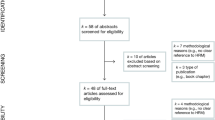Abstract
Knowledge work increasingly takes place in collaborative events from different and changing workplaces due to mobility, multi-locational, and geographical distribution of team members. What are the key elements to create mutual understanding and make creative collaborative decisions in global business meetings? How can these key elements be designed as shikake nudges to build awareness of the individual and team conditions to help knowledge workers make better work environment choices and reach higher levels of engagement? We addressed this question as a transformative journey from island of knowledge to mutual understanding in the context of collaborative decision making in creative global business meetings. We present a “Six Steps to Engagement” framework that offers three feedback loops as shikake triggers to improve the local and global collaboration context and behavior, and three choice-decision-commitment steps toward improving the work environment and increasing knowledge work productivity. To support this framework, we define the following: (1) mutual understanding metrics (MUM) and method for self-assessment and 360 team assessment that define different MUM stages in the journey from island of knowledge to mutual understanding; and (2) an engagement Matrix of Choices (eMoC) prototype to assist geographically distributed knowledge workers to make explicit choices with an understanding of the potential level of engagement and collaboration they can achieve and the respective enablers and hindrances. We argue that iterative and continuous MUM assessment and explicit eMoC choices are central to achieve mutual understanding, high-performance teamwork, and eliminate rework, coordination, and decision wait time. This iterative process (1) allows team members to build awareness of their local conditions and make their local conditions transparent and visible to the rest of the team; (2) provides a feedback mechanism that indicates the engagement potential of each team member and the team, as well as a trigger or nudge toward moving to higher levels of engagement; (3) leads to the alignment of expectations and synchronicity of potential engagement levels.













Similar content being viewed by others
References
Armstrong D, Cole P (2002) Managing distances and differences in geographically distributed work groups. In: Hinds P, Kiesler S (eds.) Distributed work, MIT Press, 167–186
Bell BS, Kozlowski SWJ (2002) A typology of virtual teams. Implications for effective leadership. Group Org Manag 27(1):14–49
Bosch-Sijtsema PM, Fruchter R, Vartiainen M, Ruohomaki V (2011) A framework to analyze knowledge work in distributed teams. Group and Organization Management (GOM), gom.sagepub.com, April 2011, 1–33
Chaldini RB (2006) Influence: the psychology of persuasion. HarperCollins eBooks, NY
Chudoba KM, Wynn E, Lu M, Watson-Manheim MB (2005) How virtual are we? Measuring virtuality and understanding its impact in a global organization. Inf Syst J 15:279–306
Cramton CD (2001) The mutual knowledge problem and its consequences for dispersed collaboration. Organ Sci 12(3):346–371
Du J, Jing S, Liu J (2012) Creating shared design thinking process for collaborative design. J Netw Comput Appl 35(1):111–120
Fruchter R (2001) Bricks and bits and interaction. In: Terano T, Nishida T, Namatame A, Ohsawa Y, Tsumoto S, Washio T (eds.) Exploring new frontiers on artificial intelligence. In LNAI 2253, Springer Verlag, 35–42
Fruchter R (2006) The fishbowl: degrees of engagement in global teamwork. In: Smith I (ed.) Intelligent computing in engineering and architect. LNAI, Vol. 4200, Springer Verlag, Heidelberg, 241–257
Fruchter R, Bosch-Sijtsema PM (2010) The WALL: participatory design workplace supporting creativity, collaboration and socialization. Int J AI Soc J Knowl Cult Commun 26:221–232 Nr. 3
Fruchter R, Townsend A (2003) Multi-cultural dimensions and multi-modal communication in distributed cross-disciplinary teamwork. Int J Eng Educ 19:53–61 Nr. 1
Fruchter R, Bosch-Sijtsema P, Ruohomaki V (2010) Tension between perceived collocation and actual geographical distribution in project teams. Int J AI Soc 25:183–192
Hinds P, Kiesler S (2002) (eds.) Distributed work. The MIT Press, Cambridge
Hofstede G, Minkov M (2010) Cultures and organizations: software for the mind. 3rd edition, McGraw Hill
Kiesler S, Cummings JN (2002) What do we know about proximity and distance in work groups? A legacy of research. In: Hinds P, Kiesler S (eds.), Distributed work. MIT Press, 57–81
Matsumura N (2013) Shikake as an embodied trigger for behavior change: AAAI spring symposium 2013. In: Matsumura N, Fruchter R (eds.), Workshop on shikakeology: designing triggers for behavior change. Stanford, California
Matsumura N, Fruchter R, Leifer L (2014) Shikakeology: designing triggers for behavior change. AI & Soc. doi:10.1007/s00146-014-0556-5
Maznevski ML, Chudoba KM (2000) Bridging space over time: global virtual team dynamics and effectiveness. Organ Sci 11(5):473–492
Nardi BA, Whittaker S (2002) The place of face-to-face communication in distributed work. In: Hinds P, Kiesler S (eds.), Distributed work, MIT Press, 83–110
O’Leary MB, Cummings JN (2007) The spatial, temporal, and configurational characteristics of geographic dispersion in teams. MIS Q 31(3):433–452
Strogatz SH (2003) Sync: how order emerges from chaos in the universe, nature, and daily life. Hyperion Books, New York
Thaler R, Sunstein C (2009) Nudge: improving decisions about health, wealth, and happiness. Penguin Books, England
Zolin R, Hinds P, Fruchter R, Levitt R (2004) Interpersonal trust in cross-functional, geographically distributed work. Inf Organ J 14:1–26
Acknowledgments
The authors would like to thank: MediaX and Konika Minolta for their seed funding, Microsoft for the Grant from Azure for Academic Institutions, and NSF SAVI EAGER Project No. 1265953. Any opinions, findings, and conclusions or recommendations expressed in this material are those of the author and do not necessarily reflect the views of NSF. The authors thank all the AEC global team participants.
Author information
Authors and Affiliations
Corresponding author
Rights and permissions
About this article
Cite this article
Fruchter, R., Medlock, L. A journey from Island of knowledge to mutual understanding in global business meetings. AI & Soc 30, 477–491 (2015). https://doi.org/10.1007/s00146-014-0558-3
Received:
Accepted:
Published:
Issue Date:
DOI: https://doi.org/10.1007/s00146-014-0558-3




